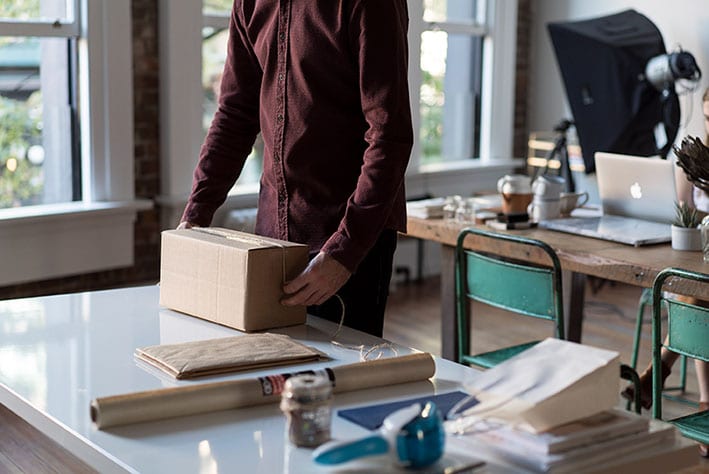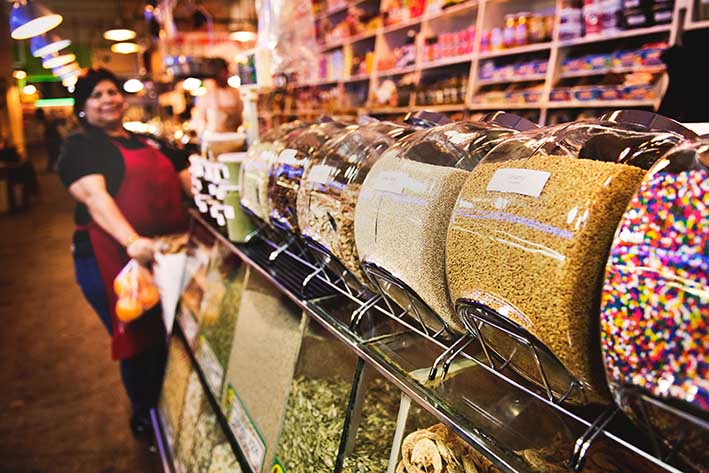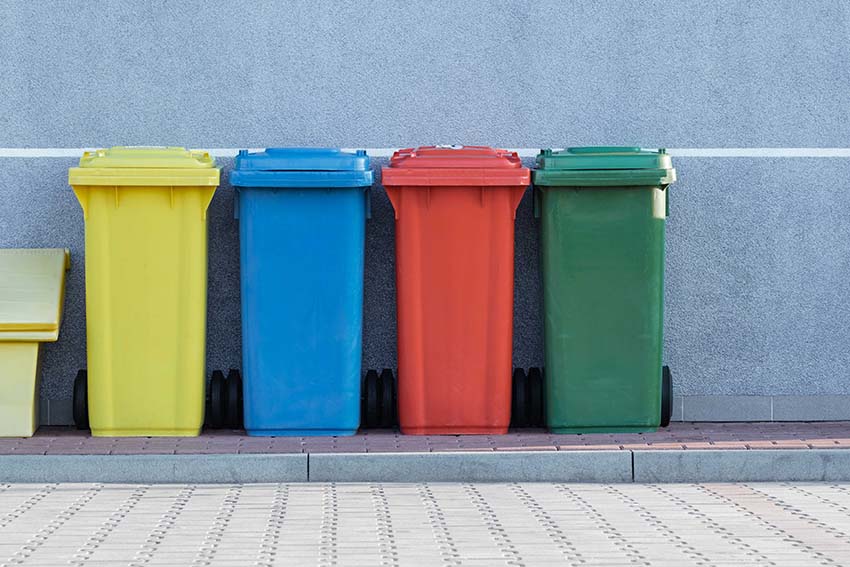Companies from Loop to Amazon implement sustainable packaging and sourcing solutions to answer eco-friendly demands from consumers. Two diverging trends currently dictate innovative package design, leaning toward heavy-duty and reusable, or more lightweight and compostable. They both serve different and necessary roles in reducing waste through life-cycle thinking.
Life-cycle analysis of a product’s environmental impact from “cradle to grave” and “cradle to cradle” plays an essential role in a circular economy (Geissdoerfer, 2017). Life-cycle thinking relies on the understanding that producers control the materials, design, and post-use expectations which inspire innovative packaging. Sustainable initiatives require concentrated efforts across a variety of platforms, from advancing compostable and recyclable materials to restructuring supply chains to circulating informational campaigns.
Though it seems counter-intuitive, in a circular economy, lightweight and reduced doesn’t mean less protection. The best packaging ensures that products arrive in the best possible condition to facilitate a sale. Given the choice between a dented package and an intact package, consumers seek undamaged goods.
Shifting to sustainable packaging methods, like all new packaging ventures, requires testing to ensure materials are capable of withstanding the rigors of transportation. After all, damaged goods deemed unsalable are more wasteful than less-sustainable packaging options. In most cases, more energy goes into producing the product than the packaging and loss of product is one of the worst energy impacts designs can generate. If there is no life-cycle of the product, there is no reason to have spent the energy packaging it.

Reduce Means Reuse
One of the best ways to cut down on single-use packaging is to avoid it entirely. A growing number of companies dedicated to a zero-waste model are popping up around the globe. Zero-waste packaging minimizes single-use plastics in favor of reusable and recyclable materials like metal and glass to mold their containers.
Circular Economy Delivery
Loop’s delivery service rollout in New York and Paris this year is highly anticipated. Reintroducing the milkman model of delivery, Loop supplies subscribers with high-quality, reusable containers of well-known products like Crest and Häagen Dazs in sturdy cloth packaging. Once a product is used up, consumers simply rinse and return their containers in the bag they came in. After pickup, containers are sanitized and sent back full of fresh products.
Innovative packaging challenges in the closed-loop model require durable containers which can withstand use after use. Investing resources to create such products necessitates that their life-cycle outlast single-use recyclables or other renewably-sourced products. Rewarding high consumer accountability when it comes to recycling products at the end of their life-cycle also fuels the sustainable circular economy. While this mindset has a higher associated cost, thinking green is capable of being a sustainable business model when whole-heartedly adopted.
Zero-Waste Supermarkets
As customers grow increasingly aware of the environmental impact of their purchasing habits, demand has produced a wave of zero-waste supermarkets. Founded in 2013, one such chain has garnered much success across France. day by day shoppers bring reusable containers to the store and purchase loosely-stored bulk products like spices, condiments, and rice. For consumers who know exactly how much of an item they require, day by day’s take-what-you-need, use-what-you-take model has the potential to reduce household food waste and keep single-use packaging out of landfills.

Though shoppers may find themselves throwing out less food, stores must keep careful track to ensure that their bulk supplies leave the shelves before they go bad. Zero-waste blogger “Litterless” maintains a list of United States stores where customers can find products without individual packaging and demonstrates the role of the internet in the growing green mentality surrounding consumer purchases.
Bring-Your-Own-Container
Busy commutes can mean grabbing a quick bite from the rows of prepackaged meals grocery stores and gas stations prepare each day. While consumers still purchase these single-use plastic-wrapped meals, reusable containers are trending in 2019 with eye-catching designs ranked on Spruce Eats, an award-winning food and lifestyle website. As Millennials exercise their spending power, it becomes increasingly apparent that environmentally-conscious companies are capturing the attention of consumers.
Metro Grocery is the first store of its kind in Canada, permitting customers to bring in their own clean reusable containers to be filled with once-pre-packaged fare. While plastic packaging is still available, the store hopes that customers will consider bringing in their containers to reduce single-use plastic waste. Creating a network of stores where bring-your-own-dishes is an option will provide greater motivation to carry reusable containers and cutlery, both fantastic habits in reducing plastic waste.
Reduce Means Recycle
The minimalist approach to sustainable packaging solutions asks companies to reduce as much material as possible without compromising the product. Whether that means cutting down on package sizes or ensuring the recyclability of a product, companies are reexamining every aspect of their supply chains. Creative sourcing solutions are an opportunity for eye-catching design which distinguishes products on the shelves.
Material Matters
While the idea of wrapping food in banana leaves is hardly a new concept, using banana leaves in lieu of single-use plastic wrap caused Rimping Supermarket in Thailand to go viral this March. Incorporating banana leaves, a simple, easily-accessible, and biodegradable product, into a niche once filled by plastic wrap generates a straightforward sustainable package design. While banana-leaf wrapping isn’t easily accessible in other regions of the world, it is a testament to the power of reevaluating the sourcing solutions at a company’s disposal.

Companies like Green Cell Foam are taking a more high-tech approach and developing a considerably more eco-friendly alternative to foam used in shipping. Their innovative foam is cornstarch-based, compostable, and water soluble. With die cut designs, Green Cell Foam calculates exact measurements to minimize resource consumption while ensuring product safety. And once the package arrives, recipients are encouraged to simply add water and watch their packaging dissolve down the drain.
Smarter Shapes
Consumers aren’t just concerned about what sustainably-sourced materials packaging uses, but also form and functionality. Sometimes all three come together to maximize eco-friendly and cost-cutting potentials. Tetra Pak’s Classic 65ml Aseptic Cube, an innovative packaging solution, optimizes storage while minimizing void space. Six tetrahedron-shaped pieces fit snuggly together to form easily stackable cubes.
Creative packaging can not only entice shoppers to unique products, but clever designs like the Classic Aseptic Cube can also increase the number of products that fit on palettes, reducing shipping costs and improving the ecological impact by shipping more products together.
Investing in Consumer Education
People want to do the right thing. They want to recycle what’s supposed to be recycled. But sometimes it isn’t that easy to know what goes where. Recycling carries a mess of rules and varies between cities. How2Recycle labeling is one way brands are trying to standardize the way people recycle in the United States. By providing clear labels which indicate what part of a product should be recycled and how, How2Recycle helps prevents incorrectly disposed trash from spoiling batches of potential recycling. Companies which adopt How2Recycle labels better ensure that their products are properly disposed at the end of their life.

Determining ideal sourcing solutions depends on the company, product, and the habits of their consumers, but steps can always be taken to diminish a company’s ecological impact. At ET2C International, we are dedicated to helping companies through strategic sourcing. Contact our team of dedicated sourcing agents for more information about how your company can rethink the sustainability of its supply chain.


